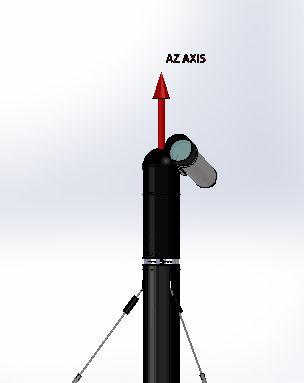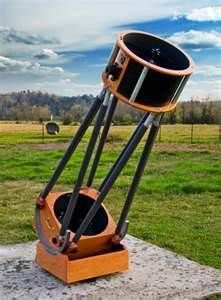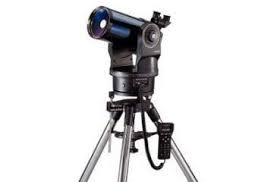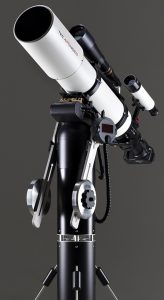This is the first article in a small series that will focus on the use and possibilities of Altitude-Azimuth (Alt-Az) telescope mounts. First the basic overview will be created and in the coming articles more details on the actual use and possibilities of the modern Alt-Az mount will be covered.
The historic view

The very first telescope mounts made were Alt-Az mounts. Logically, it is the easiest way to mount a telescope to get a compact and stable base. For astronomical telescopes, the need for tracking the objects across the sky lead to the invention of the Polar aligned Parallactic mount. In the times of no computer control, the fixed speed drive needed for the polar aligned mount was easy to make as a mechanical clock. With modern computer controlled drives, the same tracking across the sky can be achieved with the simpler and more stable Alt-Az mount.
Traditionally, the polar aligned German Equatorial mount has been seen as the best all round mount for the amateur astronomer, but that picture is changing fast with new improved Alt-Az mounts suitable for both visual observations and advanced astrophotography.
What is an Alt-Az telescope mount?

An Alt-Az mount has a vertical axle for rotation in the horizontal plane also known as Azimuth and a horizontal axle for rotation in the vertical plane also known as Altitude. Hence the name. To work correctly, the two axles must be perpendicular to each other.
Having the vertical Azimuth axle gives several advantages over the inclined Polar aligned mount. The telescope can be placed directly over the axle center, so the weight is carried straight down through the axle and into the Pier below giving increased stability. And as the axle is vertical, no balancing of that axle is needed.
When we say the Azimuth axle must be vertical, that’s only partly correct. With modern computer-controlled Alt-Az mounts, any non-vertical setup of the mount is handled by the software. Therefore, the setup of an Alt-Az mount can be done very fast as no leveling is needed.
The comeback of the manual visual Alt-Az mount

Around 1970, John Dobson came up with the idea for a simple Alt-Az mount for Newtonian telescopes. That lead to many home-built and later commercial telescopes based on that Alt-Az mount principle. Today the Dobson mounted telescope is still the easiest and cheapest way to get access to a large aperture visual telescope.
In the last 25 years, an increased number of high quality refractors has become available. For visual observers wanting a very fast and simple system, several manual Alt-Az mounts for refractors have also been introduced in the market.
The modern motor-driven Alt-Az mount

With the introduction of microcontrollers in commercial telescope mounts in the 1990’s, new possibilities for the Alt-Az mounts emerged. Installing variable speed motor drives on both axles meant that both tracking and automatic GOTO was available. Examples was the fork mounted SCT telescopes that suddenly could be setup in Alt-Az mode and still perform gotos and tracking. For astrophotography, polar alignment via a wedge was still needed.
Many manufacturers made low cost Alt-Az mounts for their entry level telescopes, unfortunately very often in a too low quality. This lead to the misunderstanding that Alt-Az mounts were of limited use for high quality observations.
Latest addition is Alt-Az mounts for Astrophotography
All larger professional telescopes built the last 30 years have been installed on Alt-Az mounts because they are cheaper, more stable and takes up less space leading to smaller observatory buildings. By controlling the mount axles as well as the camera rotation, they are offering very precise equatorial tracking.

This technology is also starting to become available on the amateur market. Some manufacturers offer Alt-Az mounts with integrated camera rotators for their larger reflectors.

Another solution made available is the Telescope rOTAtor that rotates the entire Optical Tube Assembly offering precise equatorial tracking in a compact package.
What are the advantages of the Alt-Az mount
In the coming articles, I will look at the advantages and possibilities the Alt-Az mount offers. I will explain the basics behind the movement pattern of the night sky and what it means to the visual observer and the advanced astrophotographer. Stay tuned.